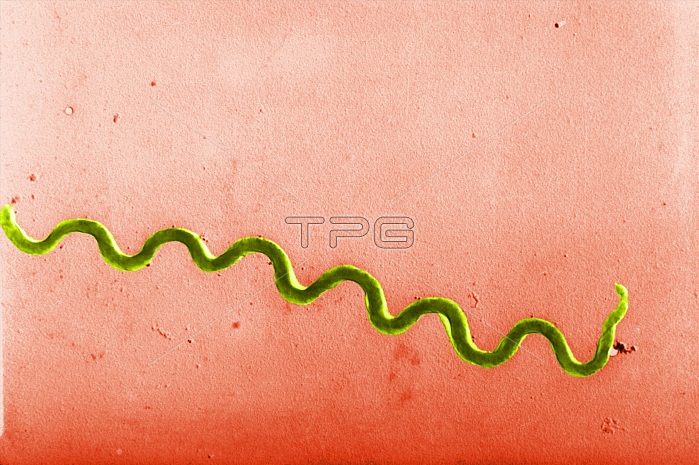
Color enhanced micrograph of Treponema pallidum, a spirochaete bacterium. In 2015, about 45.4 million people were infected with syphilis, with 6 million new cases. During 2015, it caused about 107,000 deaths, down from 202,000 in 1990. Treponema pallidum is a spirochete bacterium with subspecies that cause treponemal diseases such as syphilis, bejel, pinta, and yaws. The treponemes have a cytoplasmic and an outer membrane. Using light microscopy, treponemes are visible only by using dark field illumination. They are gram negative, but some regard them as too thin to be gram stained. T. p. pallidum is a motile spirochete that is generally acquired by close sexual contact, entering the host via breaches in squamous or columnar epithelium. The organism can also be transmitted to a fetus by transplacental passage during the later stages of pregnancy, giving rise to congenital syphilis. Magnification: unknown.
| px | px | dpi | = | cm | x | cm | = | MB |
Details
Creative#:
TOP22292859
Source:
達志影像
Authorization Type:
RM
Release Information:
須由TPG 完整授權
Model Release:
N/A
Property Release:
No
Right to Privacy:
No
Same folder images:

 Loading
Loading